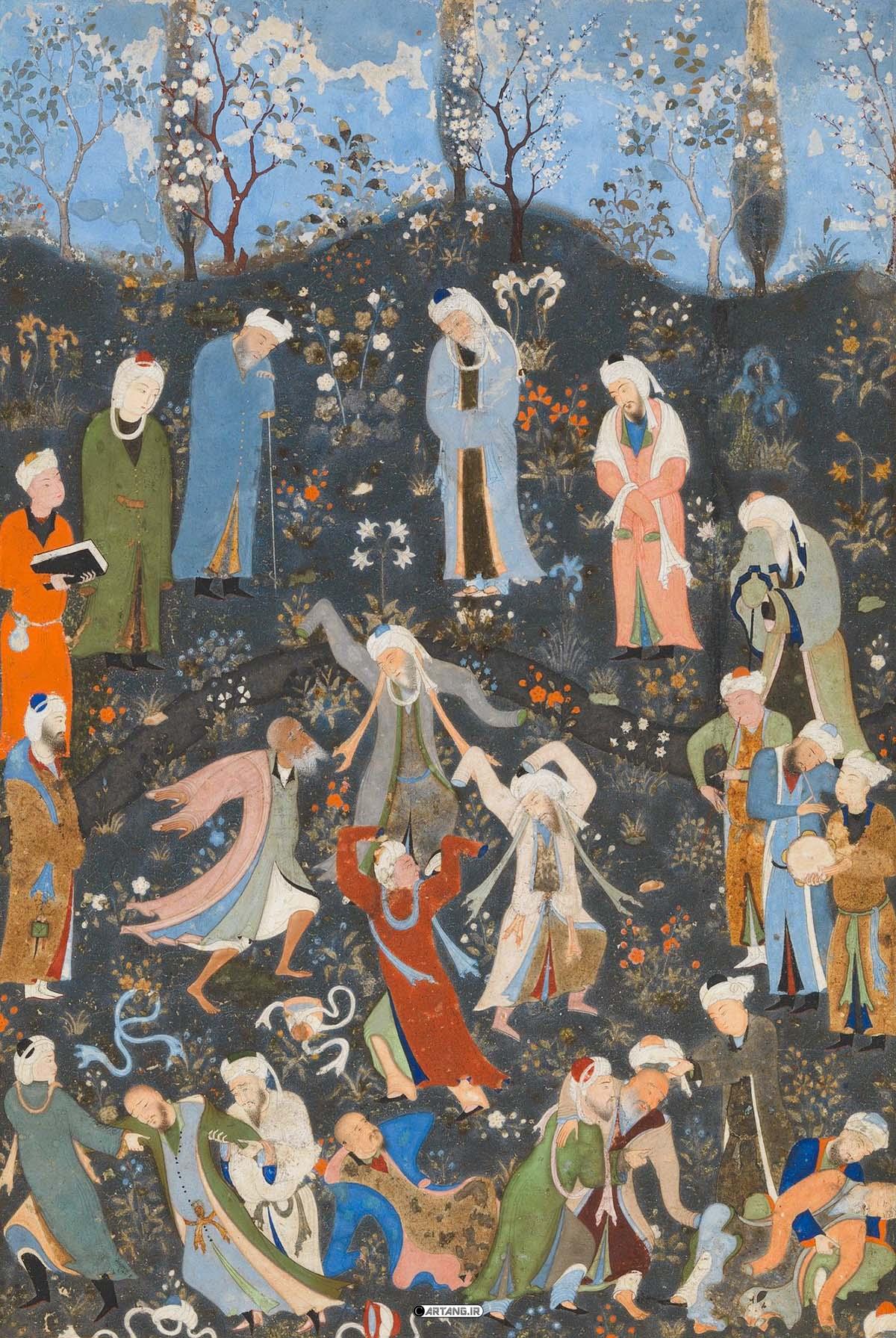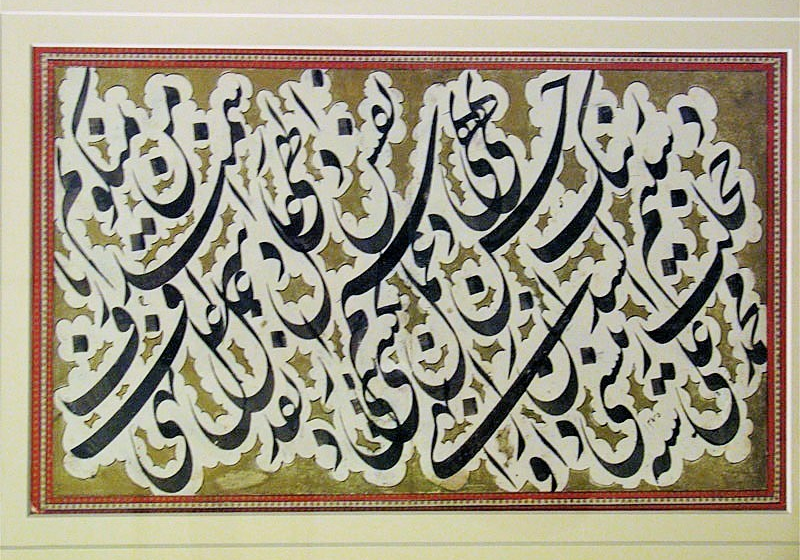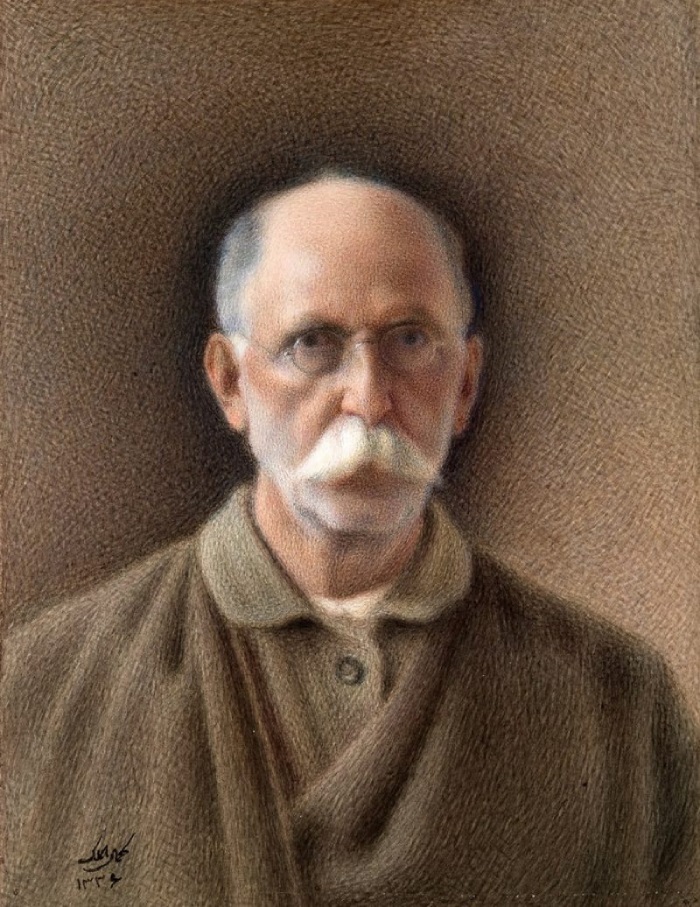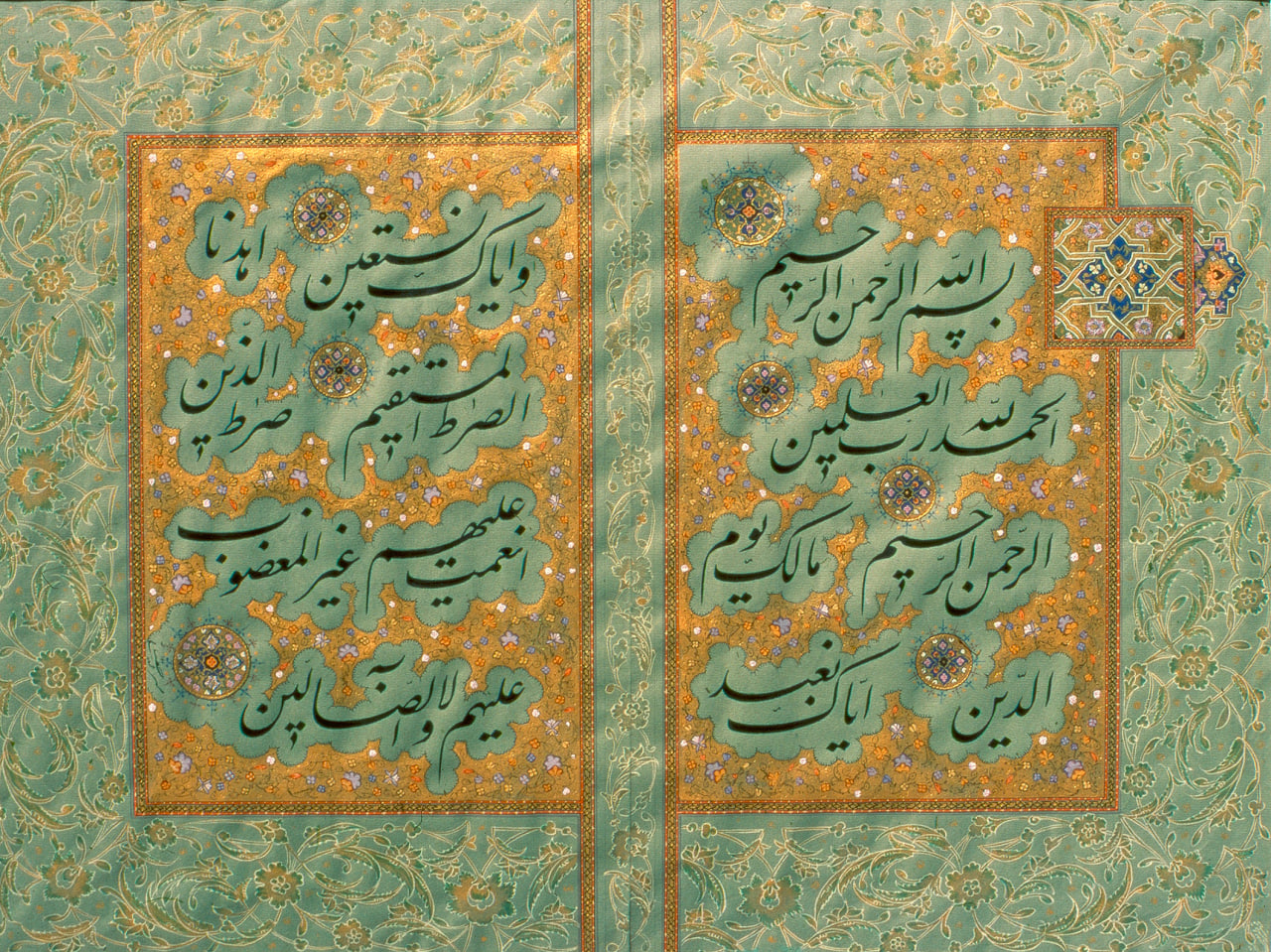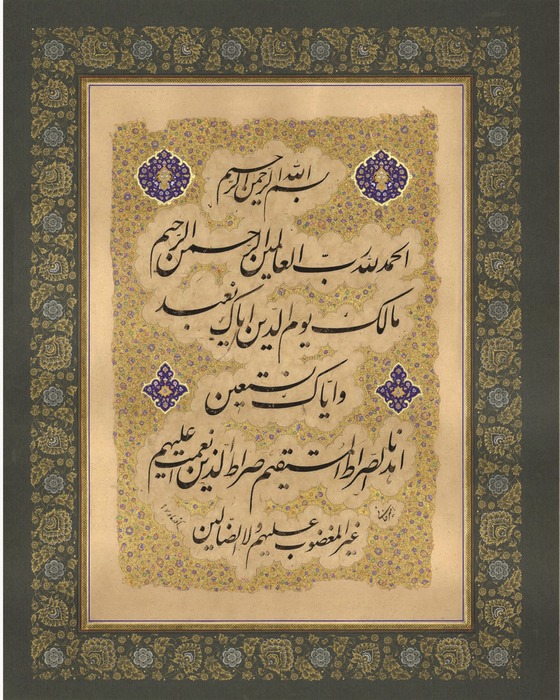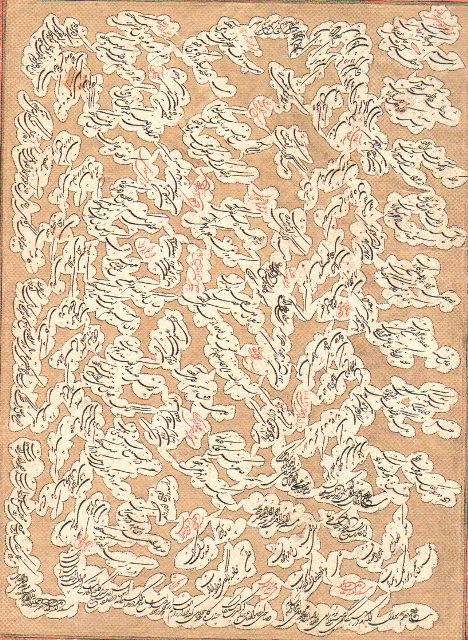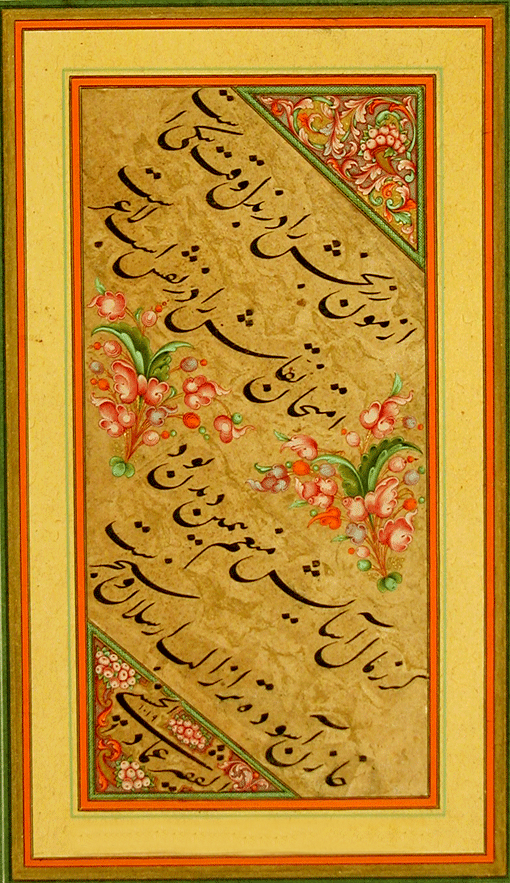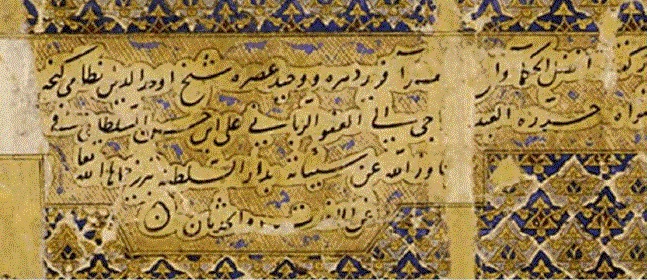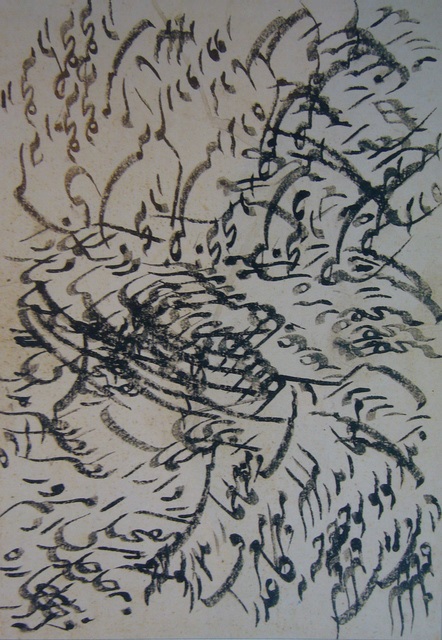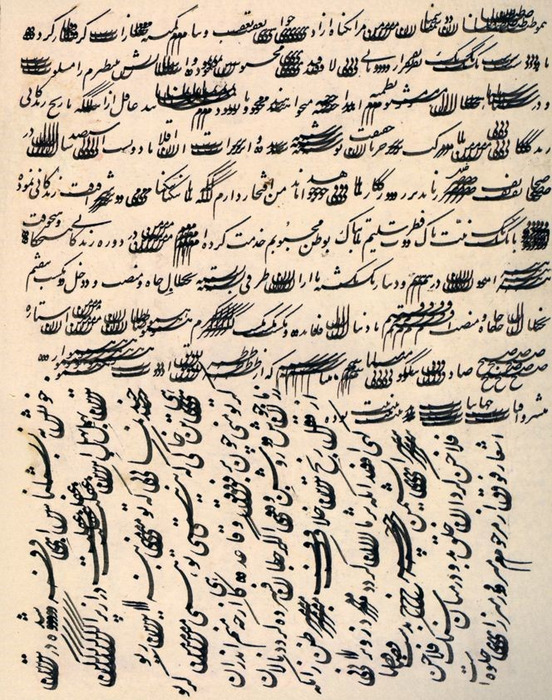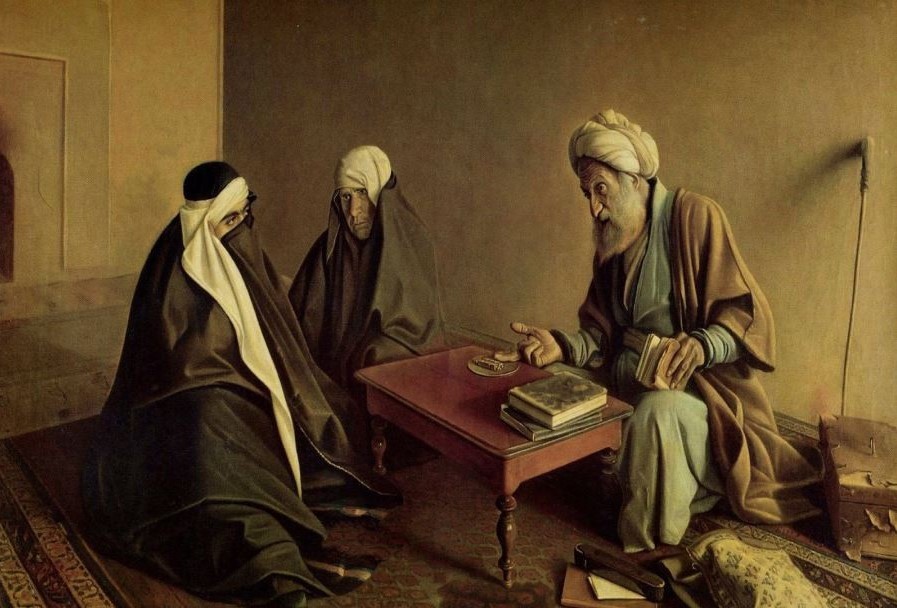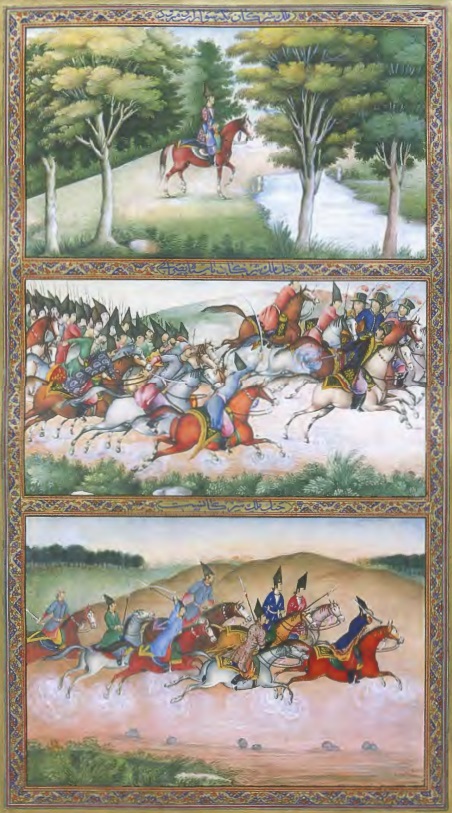
Sanīʿ al-Molk; Founder of the First Painting School in Iran
Sanīʿ al-Molk; Founder of the First Painting School in Iran
Mirza Abolhassan Khan Ghafari Kashani, known as San‘ī al-Molk, was the son of Mirza Mohammad Ghafari, a prominent painter and graphic artist of the 13th century AH.. Based on historical evidence, he was born around 1229 AH in Kashan. After completing his early education and childhood training, at the age of fifteen or sixteen, he was sent to study painting under Master Mehr Ali Esfahani, a prominent court painter during the reign of Fath-Ali Shah Qajar. Possessing innate talent and a family heritage in art, Mirza Abolhassan Khan made full use of his teachers’ guidance, gradually advancing his skills and refining his artistry. By his mid-twenties, he had emerged as one of the renowned painters of his era. In 1258 AH, during the reign of Mohammad Shah Qajar (1222–1264 AH), at the age of twenty-nine, he was granted permission to paint the Shah’s portrait using oil painting, marking his official induction into the royal court’s circle of painters. Shortly thereafter, he was appointed as Naqqash-bashi (Chief Court Painter) under Mohammad Shah.
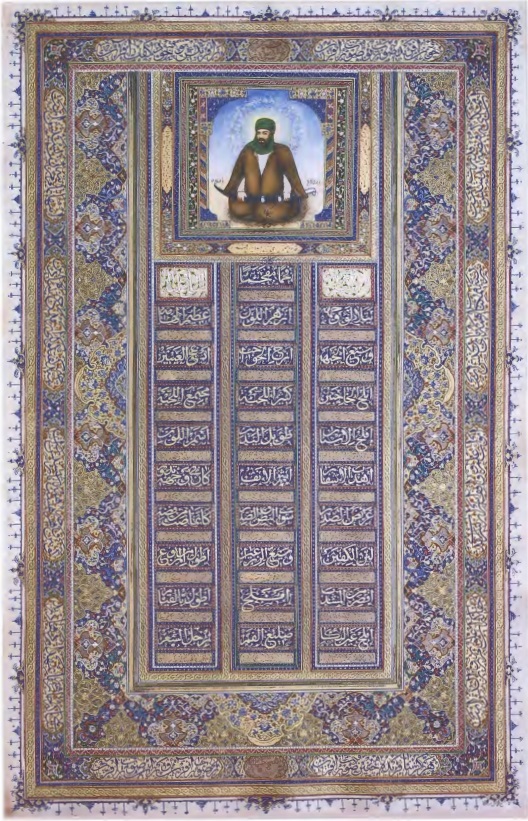
Portrait of Imam Ali ibn Abi Talib (A.S.) Watercolor and illumination on paper, 1277 AH
Journey to Italy
San‘a al-Molk, driven by his personal desire for artistic growth, mastery, and refinement, decided in the late reign of Mohammad Shah Qajar to undertake a journey to Italy, which at the time was considered the artistic center of Europe. His aim was to closely observe and study the works of major European painters, particularly Renaissance artists, and thereby gain a deeper understanding of their techniques and painting styles. With either his own resources or with the support of Mohammad Shah—or, as Khan-Molk Sāsāni notes, with the assistance of Hossein Ali Khan Mo‘ayyer al-Mamalek—he set out for Italy. During his stay, he studied at art academies and museums in Rome, Florence, Venice, and the Vatican, examining and copying works of prominent Italian artists. One notable outcome of his Italian journey is his painting inspired by Raphael’s famous “Madonna Foligno,” housed in the Vatican Museum. In this painting, the Virgin Mary (PBUH) and Jesus Christ (PBUH) are depicted on a celestial disc above the clouds, surrounded by angelic children. Below, John the Baptist (PBUH), three saints, and popes are shown alongside an angel holding a tablet. Scholars note that San‘a al-Molk’s copying of this work demonstrated such mastery that some art experts preferred his rendition over the original. The painting was long stored in the basement of Naser al-Din Shah’s court before coming into the possession of Mirza Ali Asghar Khan Amin al-Soltan Atabak, who displayed it in the main hall of the Atabak Palace (current Russian Embassy). During the Constitutional Revolution, when clashes occurred over arms delivery involving Sattar Khan and his supporters, the painting was struck by bullets and sustained multiple damages. Eventually, it was restored by Mirza Ali Akbar Khan Mozein al-Dowleh Kashani, a student of San‘a al-Molk. The painting was later hung in Kamal al-Molk’s school and remained with him in Neyshabur until the final years of his life; its current whereabouts, however, remain unknown.
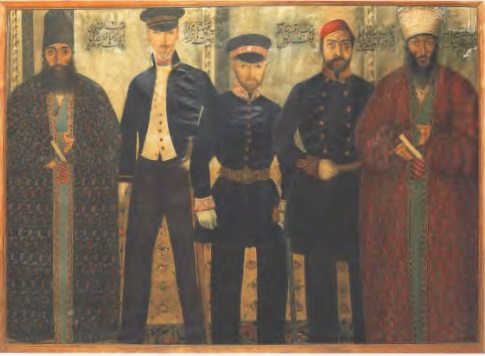
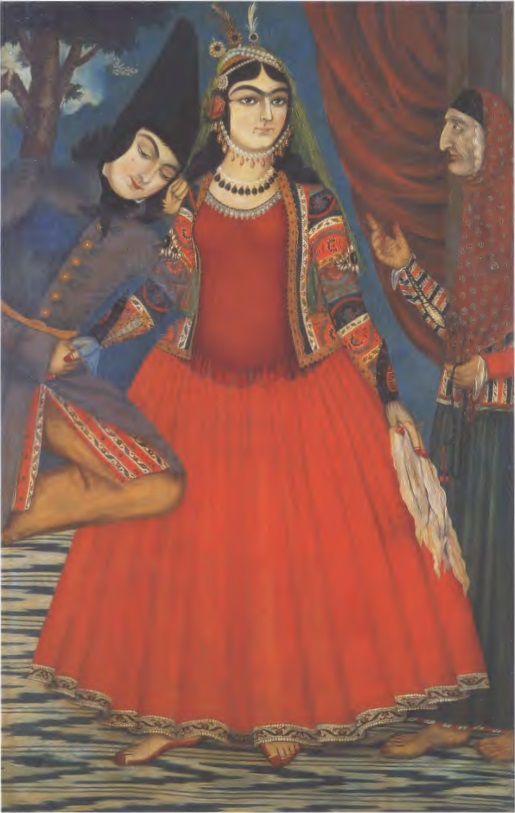
“Two Lovers and an Old Hairdresser,” oil on canvas, 1259 AH, from the collection of Golestan Palace Museum.
Role in the Publication of Vaqaye‘-e Ettefaqiyeh
While in Europe, Mirza Abolhassan Khan Ghaffari (later known as San‘ī al-Molk) not only refined his skills in painting and portraiture but also studied lithography, gaining practical expertise in print production. Upon returning to Iran, in 1277 AH, he was appointed by Naser al-Din Shah and Alinaghi Mirza E‘tezad al-Saltaneh, the Minister of Sciences, to oversee the printing house (Dar al-Teba‘aeh) and manage the publication of the newspaper Vaqaye‘-e Ettefaqiyeh, which had been initiated by Mirza Taqi Khan Amir Kabir and had reached its 471st weekly issue. San‘ī al-Molk was tasked with improving the newspaper’s design based on his European experience. He introduced illustrations of court officials, prominent figures, cityscapes of Tehran, and contemporary events in each issue. Starting from issue 472, he renamed the publication Dowlat-‘Aliyeh Iran, increased its page size, and improved the quality of paper and typography. In addition to domestic news, the newspaper sometimes featured translations from European and American publications. San‘ī al-Molk personally created preliminary sketches for the illustrations, which his students adapted for printing. This marked the first time a fully illustrated newspaper was published in Iran. Within nine months, Naser al-Din Shah recognized his skillful contribution to enhancing the newspaper and awarded him the honorary title “San‘ī al-Molk” in recognition of his service. This initiative not only modernized Persian print media but also merged traditional Persian art with new lithographic technology, establishing a precedent for illustrated newspapers in Iran.
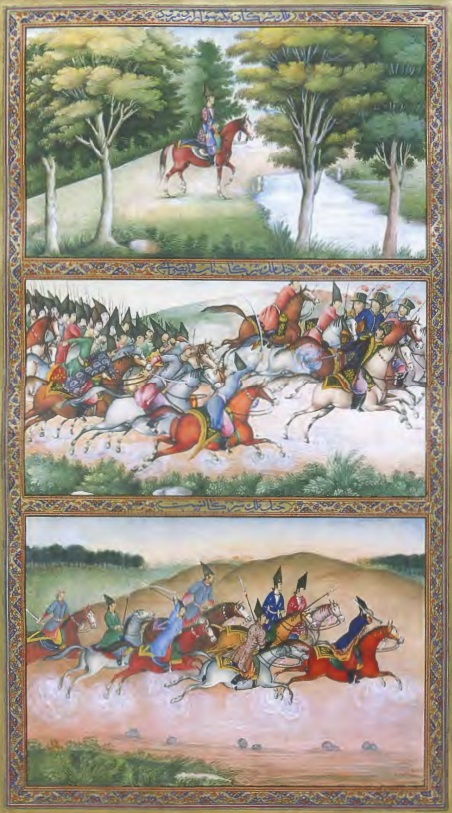
“One Thousand and One Nights,” Volume One – Watercolor on Paper, from the Golestan Palace Library Collection
Establishment of the First Painting Academy in Iran
The prestige and influence that Mirza Abolhassan Khan Ghaffari (San‘ī al-Molk) gained after his return from Italy were fully realized when he secured a suitable location near the royal citadel and palace for painting, illustration, and printing. This enabled him to pursue one of his long-cherished ambitions: founding an art school for the instruction of painting. With the materials he had brought from Italy and those prepared in Tehran, he immediately laid the groundwork for establishing the academy. To prepare public opinion and announce the initiative, he published a notice in Issue 518 of the newspaper Dowlat-e ‘Eliye-ye Iran on the 3rd of Shawwal 1278 AH. Following this announcement, he completed the preparations, and Naser al-Din Shah officially granted permission to open the painting academy and accept students. Through San‘ī al-Molk’s tireless efforts, the first state-supported painting school in Iran was founded, dedicated to teaching painting in a new style and method. By training talented students and accomplished painters, this initiative marked a new chapter in the history of Iranian art and painting. San‘ī al-Molk continued to manage the newspaper, the royal printing office, and the painting studio for six years until the end of his life. During this period, he created illustrations of prominent figures and state buildings in Tehran for publication in the newspaper. Today, each of these works holds immense historical value in terms of art, painting, and the printing industry. However, the demands of these responsibilities limited his ability to pursue independent artistic creations and new paintings as he had before.
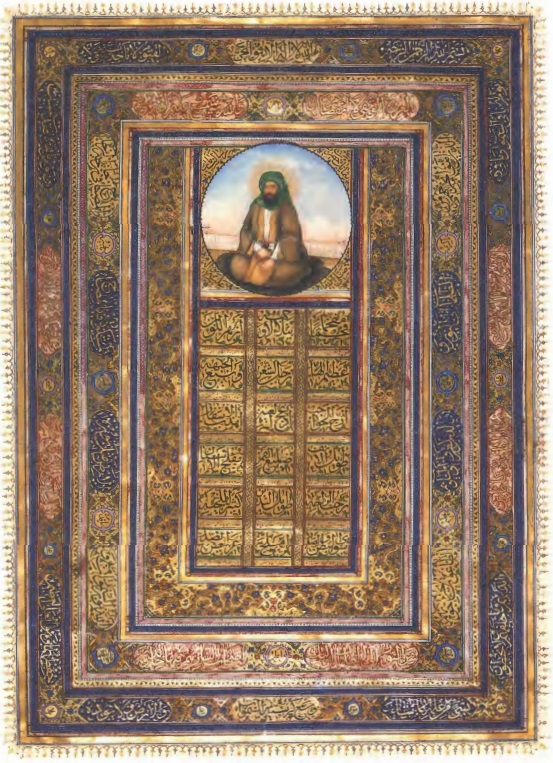
Portrait of Prophet Muhammad (PBUH), Watercolor and Illumination on Paper, 1278 AH
Artistic Style and Painting Technique of San‘ī al-Molk
An examination of Mirza Abolhassan Khan Ghaffari’s (San‘ī al-Molk) extant works reveals that he was fundamentally a naturalist artist, faithfully rendering all aspects of nature as he observed them. His acute perception allowed him to capture both the physical and psychological traits of his subjects with remarkable clarity, translating these insights onto paper or canvas with simplicity that belied his technical mastery. San‘ī al-Molk had a particular affinity for the human figure, resulting in a substantial body of single portraits and detailed studies of notable individuals, each demonstrating mastery in color harmony, subtle gradations, and compositional balance. His attention to detail and patience reflect the pinnacle of traditional Persian artistic refinement, yet his approach is notably modern in outlook. Unlike earlier Persian artists who often employed a subjective, introspective perspective, San‘ī al-Molk adopted an objective, observational viewpoint, influenced by the techniques of European Renaissance painters he studied during his travels to Italy. This blend of Persian miniature precision with European naturalism defines his unique style, positioning him as a pivotal figure in the modernization of Qajar-era Iranian painting.
Primarily, San‘ī al-Molk was a designer. The elegance, delicacy, and precision evident in his drawings connect his work to the traditional Persian miniature. He consistently strove to maintain proportions in accordance with nature, ensuring the accuracy of his designs. His approach to composition was flexible and inventive, sometimes following Western methods and other times adhering to Eastern conventions, yet always in a uniquely personal and innovative way. Since his focus was almost exclusively on human faces and expressions, he often gave less importance to the rules of perspective. Minor mistakes made by his assistants and students were overlooked, as San‘ī al-Molk considered the depiction of the subject—the face and figure—to be the essence, while other elements were secondary. Some of his works reveal a playful humor or subtle satire, a rare feature in Iranian art, reflecting his witty and perceptive personality, traits commonly observed among the people and families of Kashan. During his time in Italy, European painting had not yet undergone the subsequent major transformations, and most artists and studios adhered to the classical Renaissance principles, continuing to work in the established styles of that era.
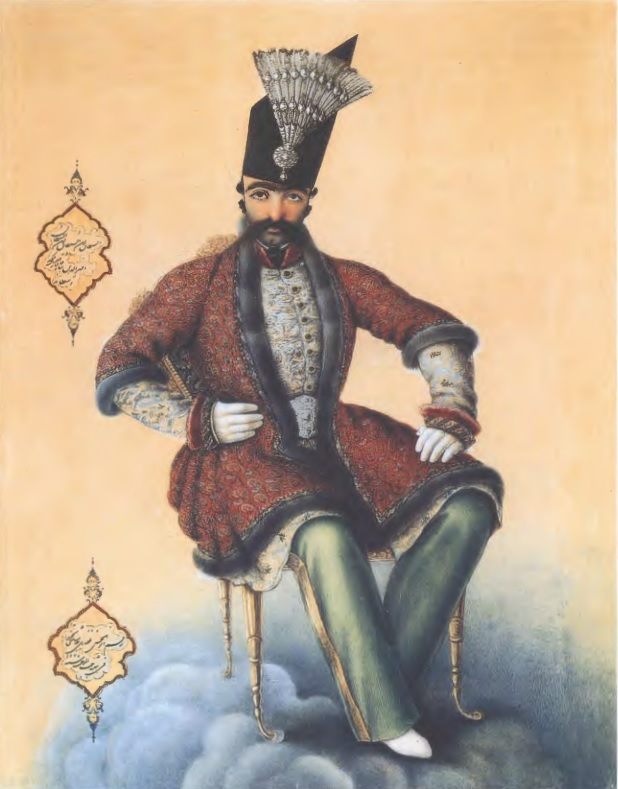
Nasser al-Din Shah Qajar, watercolor on paper, from the Louvre Museum collection
Overall, it can be said that San’ieh-al-Molk, in his design, coloring, composition, and choice of subjects, never forgot his Iranian identity and authenticity. Although he learned many lessons from Western art techniques, he never succumbed to them nor let them diminish his artistic personality. Adherence to this principle is what distinguishes his position among Iranian artists of recent centuries and elevates his stature in the eyes of connoisseurs of authentic Iranian painting.
| Name | Sanīʿ al-Molk; Founder of the First Painting School in Iran |
| Country | Iran |
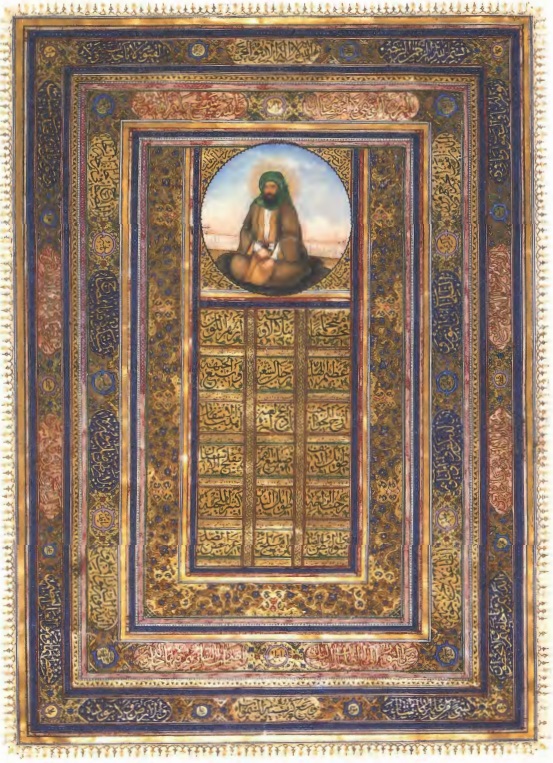
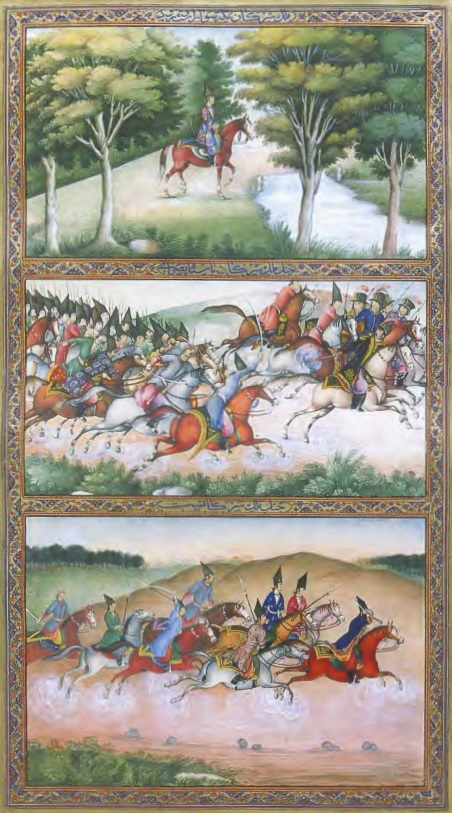
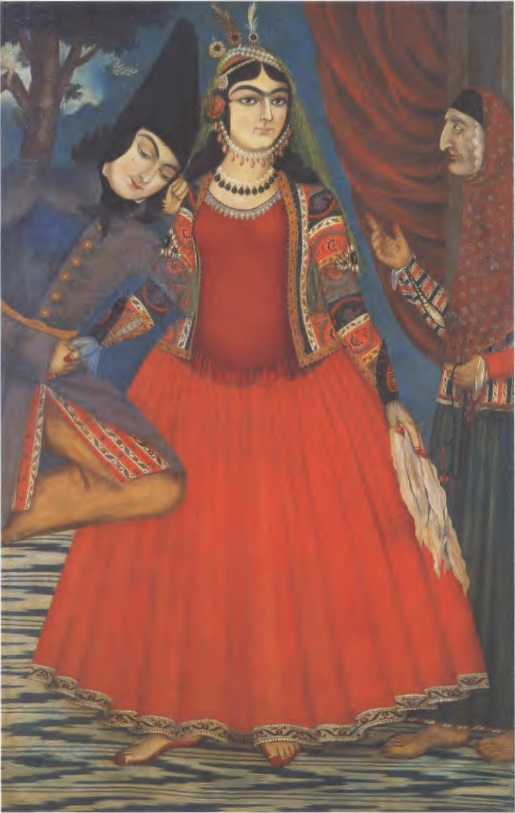
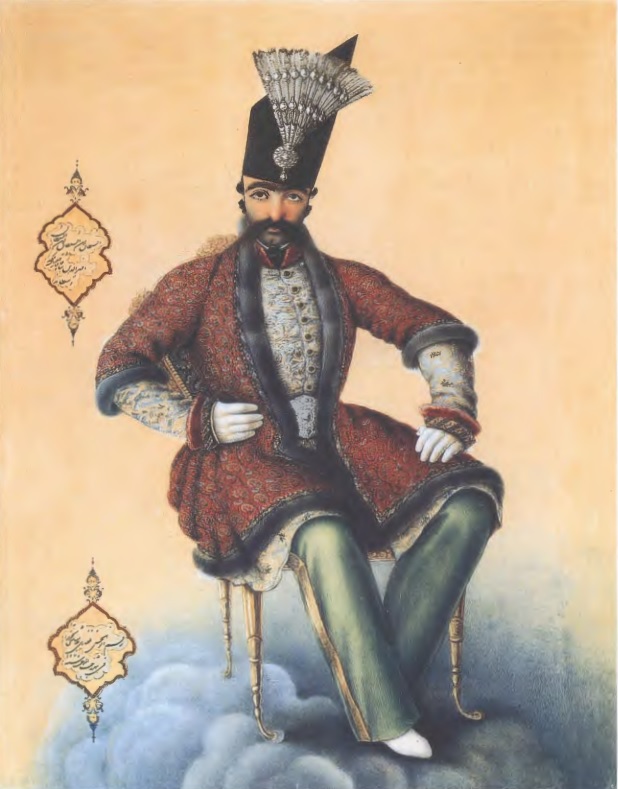
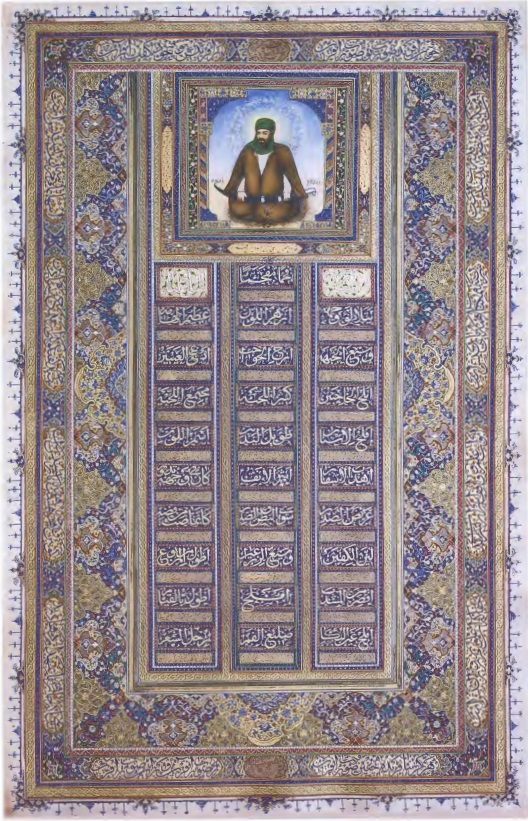
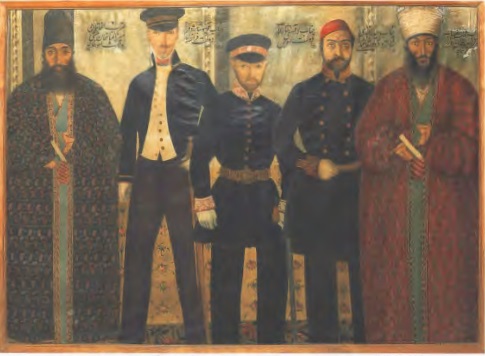






Choose blindless
Red blindless Green blindless Blue blindless Red hard to see Green hard to see Blue hard to see Monochrome Special MonochromeFont size change:
Change word spacing:
Change line height:
Change mouse type:

